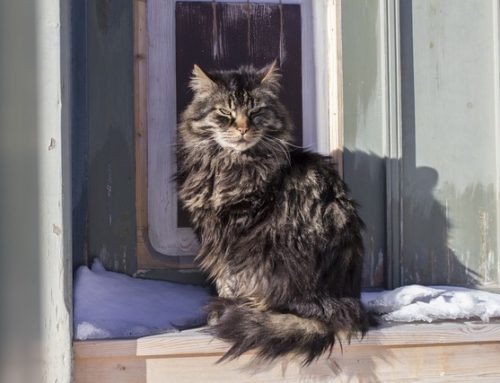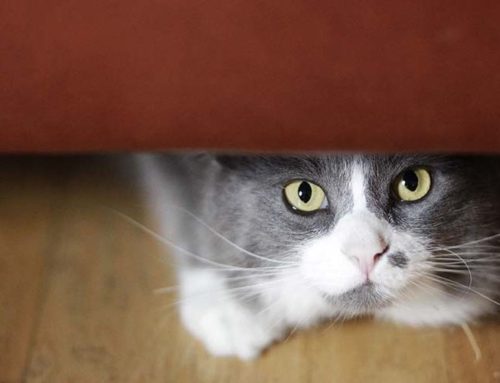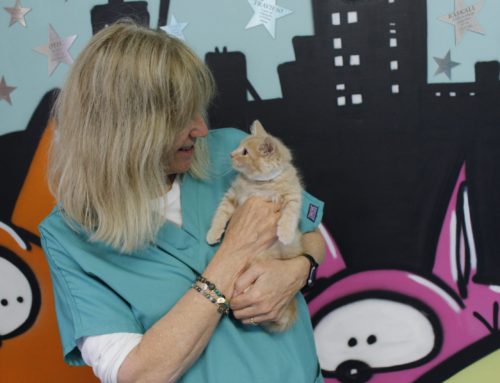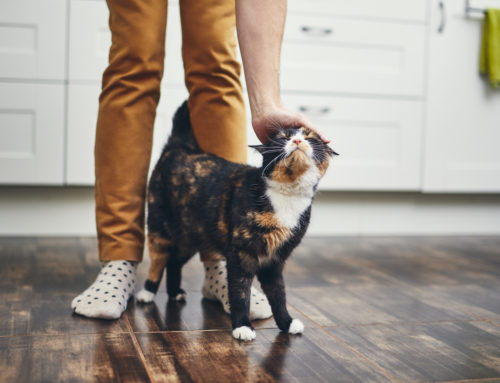What Is Feline Leukemia Virus (FeLV)?
By Dr. Amanda Page
What is Feline Leukemia Virus?
Feline Leukemia Virus (FeLV) is a serious viral disease that affects ONLY CATS. Fortunately, there are many ways we can protect our cats from exposure to this disease. It is estimated that 2.3% of cats in the western United States are infected with FeLV.
How does FeLV cause disease?
The Feline Leukemia Virus can cause bone marrow suppression. One of the functions of bone marrow is to produce the cells of the immune system that fight off infection. Therefore, this disease can result in a suppressed immune system. The immune system normally protects the cat from common infectious agents (bacteria, viruses, etc) that do not generally cause disease in healthy cats. However, if a cat’s immune system is weakened, as with FeLV, these same organisms can cause disease – known as secondary or opportunistic infection. Although the disease only affects cats, it is recommended that immunocompromised people (i.e., chemo patients and AIDS patients) not reside with FeLV + cats because these cats are more likely to harbor opportunistic infections that could be transmitted to immunocompromised humans. This viral disease is also associated with the development of certain types of cancer (i.e. lymphoma, leukemia) in affected cats.
What is the outcome of disease?
Cats infected with FeLV have 4 different possible outcomes:
- Succumb to the infection and develop FeLV associated diseases. The development of FeLV associated diseases such as bone marrow suppression or cancer poorly affects the cat’s prognosis.
- Overcome the virus but the viral “DNA” is incorporated into the cat’s own DNA; these cats may or may not develop illness at some point in their lifetime. Those cats that are infected and have no clinical signs may remain asymptomatic for months to years or for life. These cats should still be considered contagious to other cats.
- Completely eliminate the virus from their system
- Or the virus could be confined / localized to a small region of the body, such as a mammary gland (rare).
FeLV positive cats must be kept indoors away from unaffected cats so they don’t spread the disease to other cats. They should be spayed/neutered, provided with good nutrition, avoid raw diets, and need regularly visits to their veterinarian. With proper care many FeLV cats can live months to years in apparent good health.
How does a cat get FeLV?
The most common way cats get the disease is through saliva and casual contact with an infected cat (i.e. mutual grooming, sharing bowls, touching noses). Since this disease is rather contagious between cats, it is important to completely isolate new cats of unknown viral status and to wash hands between handling cats. Kittens are more susceptible to FeLV. Cats who at greater risk of exposure are those who are allowed outdoors and encounter infected cats. The virus can also be transmitted from mother to kittens.
How do we test for FeLV?
A simple in-house blood test, often called a “snap” test, can be performed to test for FeLV. If the test is positive, it could mean that the cat has FeLV or that the test could be wrong. A positive test should be confirmed by an IFA test, which can be done at a full-service vet clinic. If the IFA test is negative, it could mean that the cat is 1) not infected with FeLV at all or that 2) the cat was recently infected (up to 30 days ago) but won’t test positive yet, in which case a repeat IFA test should be done again approximately four weeks later to confirm.
How can we protect our cats from FeLV?
- Keep cats exclusively INDOORS
- VACCINATIONS are highly recommended for kittens and also for adult cats determined to be at risk (i.e. cats that go outdoors or encounter new cats that have not been viral tested). Vaccinations will NOT interfere with testing for the disease.
- ISOLATE & TEST NEW KITTENS AND CATS for FeLV before allowing them to interact with your existing pets.





